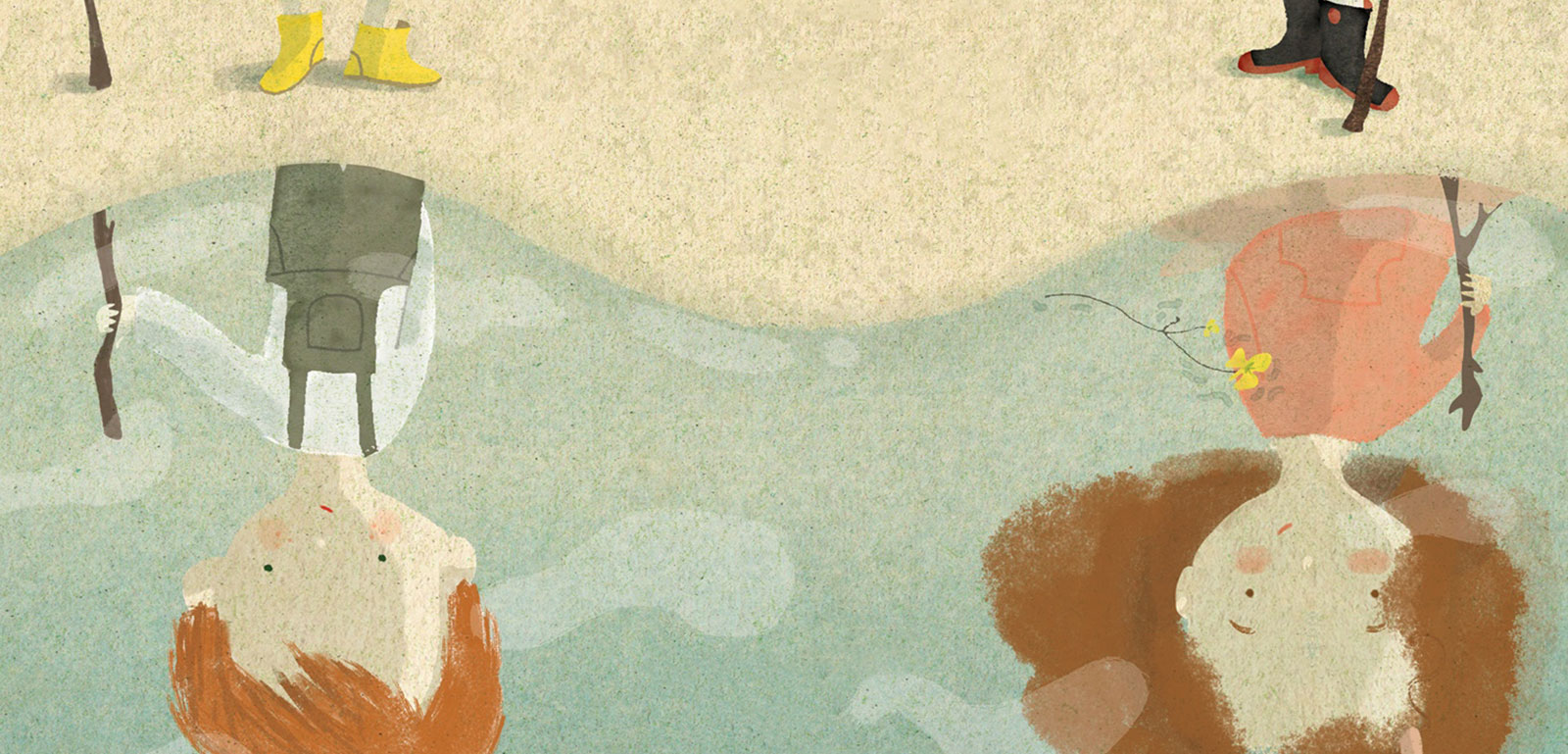Puddles, Pirates, and Whales, Oh My!
This season’s selection of coastal-themed books for kids.
Article body copy
’Tis the season when my eco-anxiety peaks as visions of plastic crap dance through my head. I see plastic toys in plastic packaging, candy canes in plastic wrappers, and rolls upon rolls of Scotch tape. This year, have yourself a climate-friendly Christmas by getting the children in your life books instead of the latest plastic toys and spend some time reading together. It’s a win-win-win: you’ll reduce your holiday footprint, get to spend more time with the kids, and boost their brain power. Here’s a dozen ocean-themed books to add to your shopping list.
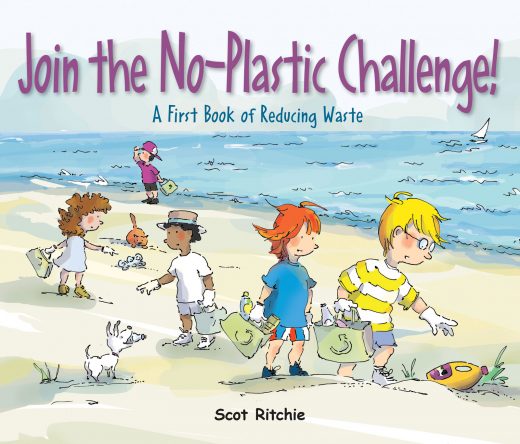 Join the No-Plastic Challenge! A First Book of Reducing Waste
Join the No-Plastic Challenge! A First Book of Reducing Waste
Text and illustrations by Scot Ritchie
32 pp. Kids Can Press
There are plenty of creative ways kids can help reduce plastic waste and Join the No-Plastic Challenge! A First Book of Reducing Waste is packed with ideas. This book invites children ages four to seven to join Nick on his birthday as he challenges his friends to go all day without using single-use plastics. On their adventure to the island, the children pack water bottles and reusable bags, say no thanks to plastic straws on the ferry, decorate with kites and streamers made from natural materials rather than balloons, and participate in a beach cleanup. Throughout the day, they learn what plastic is, how it’s made, how it’s used, how it’s polluting the ocean, and how they can avoid it. This engaging and empowering book introduces readers to an important topic in a way that inspires positive action. Cheerful illustrations and diverse characters help kids picture themselves making planet-friendly choices about plastics, just like Nick and his pals.
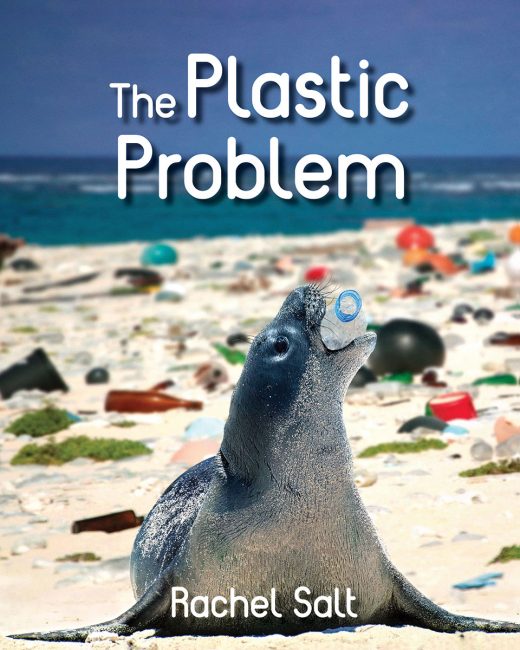 The Plastic Problem
The Plastic Problem
Text by Rachel Salt
80 pp. Firefly Books
Older children, ages nine to 13, can also learn about the impact of plastic on our planet and how they can help turn the tide through The Plastic Problem. This comprehensive book covers everything from how plastic is made and how it breaks down (or doesn’t) to how it ends up in the ocean and affects the 700 species known to eat it. With kid-friendly examples—like the time a ship lost a container packed with 28,000 rubber duckies that then rode the ocean’s currents—and easy-to-understand illustrations, this book will keep readers engaged right until the end, where they’ll find a slew of hopeful solutions. After learning about how consuming less can make a big difference—and how the average 10-year-old in Britain has 238 toys and only regularly plays with 12—kids may have more reasonable wish lists in the future.
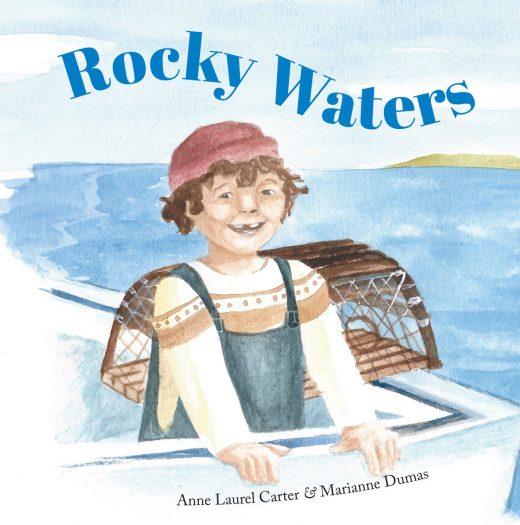 Rocky Waters
Rocky Waters
Text by Anne Laurel Carter
Illustrations by Marianne Dumas
32 pp. Groundwood Books
Precocious daydreamers who have been told they’re too young for this or that will see their own stories reflected in Rocky Waters. In this charming tale, Rocky, the youngest of 13 children, eagerly awaits the day the smallest pair of boots fit him so he can join his dad and siblings fishing for lobsters and follow in the footsteps of his Acadian ancestors. When that day finally arrives, he is in his element. “The sea’s voice swells with adventure,” writes author Anne Laurel Carter. “There are no walls, only the sun on the rise. Rocky feels as free as a seagull.” Young readers will learn about lobster fishing alongside Rocky, who shadows his father and big sister Patsy. Breezy watercolor illustrations paint a picture of the simple joys of the simple way of life. An author’s note reveals that Rocky Waters is based on a true story that took an unexpected turn. Rocky was diagnosed with leukemia when he was 19, but two things saved his life: Patsy, who donated bone marrow, and his love of the ocean, which gave him the determination to fight the disease.
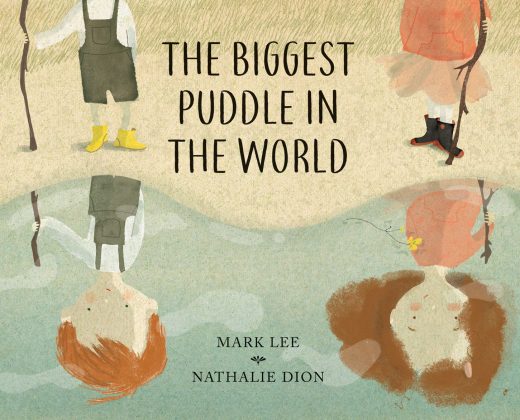 The Biggest Puddle in the World
The Biggest Puddle in the World
Text by Mark Lee
Illustrations by Nathalie Dion
36 pp. Groundwood Books
Attention grandparents: The Biggest Puddle in the World is the perfect book to gift the grandkids, along with an invitation for a sleepover—a present for the parents, too! This sweet story for children in kindergarten to grade two follows siblings Sarah and Charlie as they experience some classic joys of childhood: staying with the grandparents; exploring a big, old house; and jumping in puddles. After several days of rain, Sarah asks her grandfather, Big T., where all the rain comes from. Big T. promises to explain, but says they’ll have to find the biggest puddle in the world first. So begins their joyful journey to the ocean and a lighthearted lesson about the water cycle. Whimsical watercolor illustrations in muted tones capture the excitement and beauty of their adventure in nature and the tender grandparent-grandchild relationship.
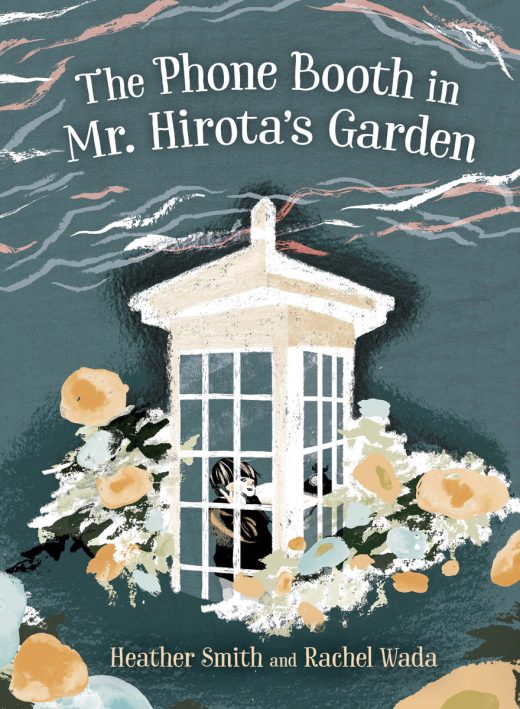 The Phone Booth in Mr. Hirota’s Garden
The Phone Booth in Mr. Hirota’s Garden
Text by Heather Smith
Illustrations by Rachel Wada
32 pp. Orca Book Publishers
Most children will experience grief, whether it’s the death of a grandparent or a pet, and the holidays can bring a tsunami of emotions. Books about grief and recovery can help normalize those feelings and give children hope for the future. The Phone Booth in Mr. Hirota’s Garden is one of those books. In this touching tale of loss and resilience, young Makio and his neighbor Mr. Hirota meet every morning in the man’s garden to look down on the harbor and try to spot Makio’s dad and Mr. Hirota’s daughter at work. At least that’s what they did in happier times. When a tsunami hits their village, it snatches Makio’s dad and Mr. Hirota’s daughter. Then one day, Mr. Hirota builds a phone booth and calls his daughter on a disconnected old-fashioned phone. Soon, other villagers, including Makio, start using the phone to call their lost loved ones. Inspired by traditional Japanese art forms and techniques, the introspective illustrations absorb and reflect the emotions of the story. In an author’s note, Heather Smith shares how she was inspired by a true story about a phone booth that helped a tsunami-ravaged community heal. “I hope that, like Makio, readers will see that sometimes in sadness there is beauty,” she writes.
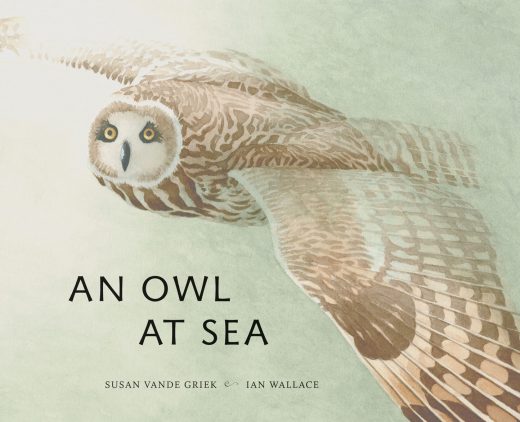 An Owl at Sea
An Owl at Sea
Text by Susan Vande Griek
Illustrations by Ian Wallace
32 pp. Groundwood Books
An Owl at Sea is another book of hope and recovery based on a true story. Told in a prose poem, this story follows a short-eared owl that loses its way and lands on an oil rig in the middle of the North Sea. Too exhausted to go on, the owl huddles on the deck where it’s discovered by perplexed riggers who make it a bed and dinner.
For what is an owl
of field and tree
doing here—
here on an oil rig
moored on water
one hundred miles out
on the heaving gray sea?
When another bird—a helicopter—lands on the rig, the owl is carefully bundled up and delivered back to shore. On land, it’s greeted by animal rescuers, who nurse it back to health and set it free in the countryside. Thoughtful watercolor illustrations capture the contrast between land, sea, and industry, and complement the melodic poetry. Ideal for readers ages six to nine, the book includes an author’s note with additional details about this particular owl’s adventure and information about short-eared owls in general.
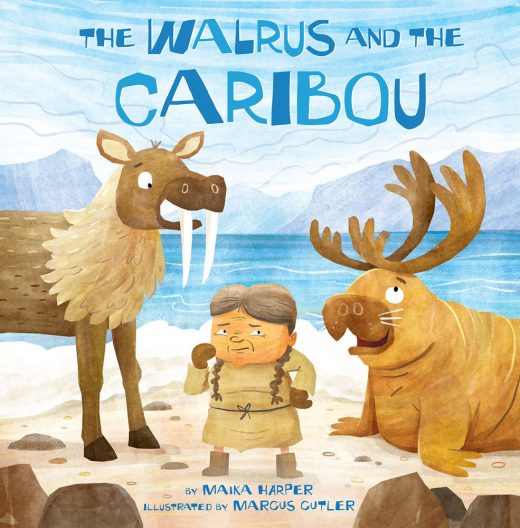 The Walrus and the Caribou
The Walrus and the Caribou
Text by Maika Harper
Illustrations by Marcus Cutler
32 pp. Inhabit Media
Here’s a fun question for the kids in your life: if you had the power to create any animal, what would you make? In The Walrus and the Caribou, which is based on a traditional Inuit story and is also available in Inuktitut, children are invited to ponder this question as they watch a woman breathe life into the world and create animals. It’s trial and error as she gives antlers to a walrus and tusks to a caribou before swapping them out. This fun, fast-paced book—complete with engaging illustrations of expressive characters—offers a lesson in the power of putting your mind to something and following through. As author Maika Harper notes in the introduction, versions of this story can be found across the Arctic. “The traditional origin stories of Inuit are plentiful and powerful and always leave you learning something new,” she writes.
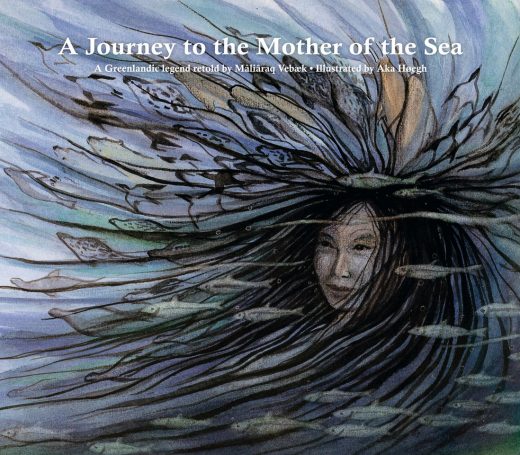 A Journey to the Mother of the Sea
A Journey to the Mother of the Sea
Text by Mâliâraq Vebæk
Illustrations by Aka Høegh
32 pp. Inhabit Media
Frozen 2 doesn’t have anything on A Journey to the Mother of the Sea. In this icy, magical, and sometimes-scary Greenlandic legend, the Mother of the Sea lives at the bottom of the ocean and rules over all aquatic creatures. She sends animals to the surface for hunters to catch, but withholds them when people misbehave. A shaman with supernatural powers must then plunge to the seafloor and brush her hair to make amends. One year, the Mother of the Sea gets so angry, the sea freezes over, making it impossible for people to hunt. An old woman who used to be a shaman bravely and successfully makes the terrifying journey to the deep, where she smooths the Mother of the Sea’s hair and smooths things over. The Mother of the Sea explains that she was mad because people have been mistreating and polluting the ocean—a relevant issue today. This legend, told with gripping prose and moody illustrations, offers a lesson in perseverance and the importance of caring for the ocean. An Inuktitut version is also available.
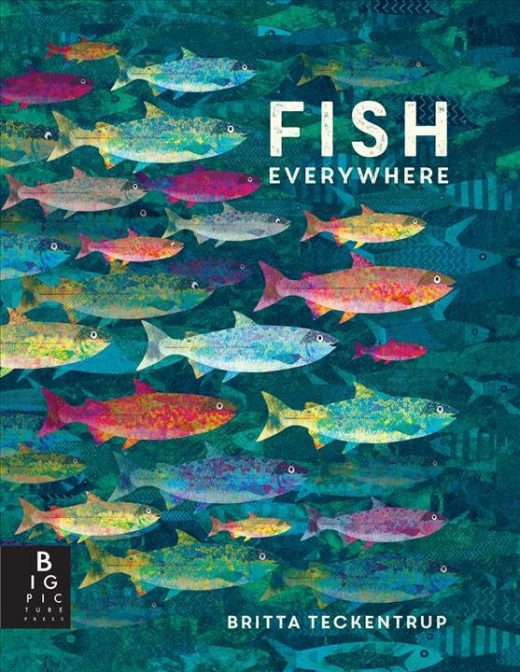 Fish Everywhere
Fish Everywhere
Text and illustrations by Britta Teckentrup
32 pp. Big Picture Press
Know a future ichthyologist itching for more intel on fish? Fish Everywhere is for them. This colorful compendium takes children ages six to nine underwater to learn about the basics of fish biology, behavior, history, and habitat. It also dives into how fish become parents, the life cycle of salmon, and how humans interact with fish (hint: we eat them, trash their homes, keep them as pets, and study them to learn more about their fascinating lives). There are fun facts about dozens of fish—for example, archerfish can spit and anglerfish have lights on their heads—and Where’s Waldo?-type activities on a few pages. The illustrations and cover art from best-selling illustrator Britta Teckentrup are so eye-catching, you might want a copy for your coffee table.
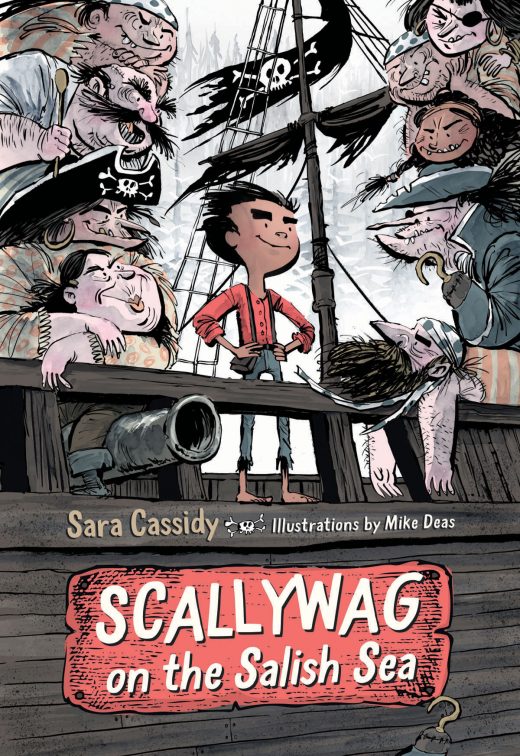 Scallywag on the Salish Sea
Scallywag on the Salish Sea
Text by Sara Cassidy
Illustrations by Mike Deas
80 pp. Heritage House
Scallywag on the Salish Sea is the perfect stocking stuffer for the pirate fan. This chapter book tells the tale of a nameless orphan boy who ends up on a pirate ship where he’s put to work gutting fish in the galley. The boy dreams of freedom, family, and a name to call his own, but he appears stuck with the quirky crew of pirates—until he discovers gems in an unexpected place. In exchange for his freedom, the boy leads the captain (and, inadvertently, a competing pirate posse) to the treasure, picking up some clues about his existence in the process. Lively dialogue and action-packed illustrations make this sweet and salty story a page-turner for adults and kids alike.
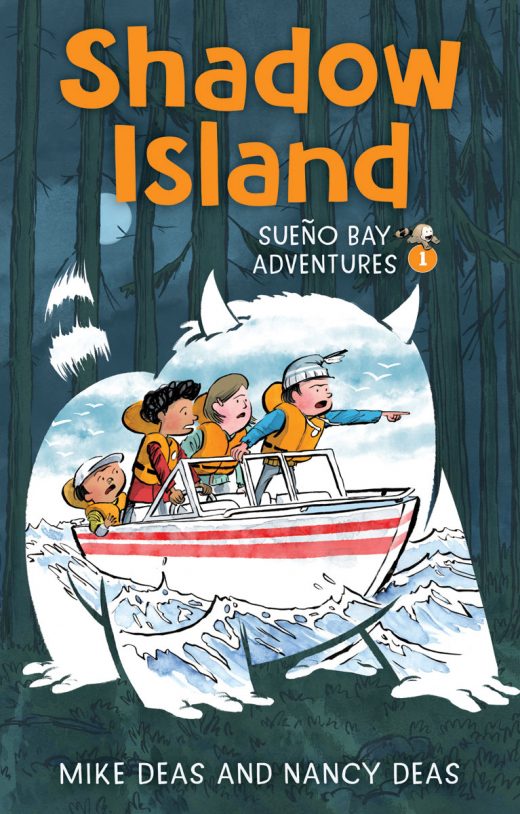 Shadow Island: Sueño Bay Adventures
Shadow Island: Sueño Bay Adventures
Text by Mike Deas and Nancy Deas
Illustrations by Mike Deas
192 pp. Orca Book Publishers
Graphic novels are hot these days and Shadow Island: Sueño Bay Adventures was a hit in my household. I soon realized why my six- and eight-year-old didn’t want to turn out the lights at bedtime. This story has it all: a mystery set on misty islands, a crew of kids determined to crack the case, cute and cuddly supernatural creatures, and a surprising plot twist that reminds savvy sleuths to second-guess everything. Told through vivid illustrations and animated dialogue, this adventure follows an orphan named Ollie whose been shuffled between homes before ending up in Sueño Bay, Robertson Island, Home of the Supernatural, population 54. He’s desperate to get off the island until he finds himself in a race to save the imperiled Moon Creatures. At the end of the heart-pumping mission, Ollie decides to give Sueño Bay another chance—and readers can look forward to the next book in the series.
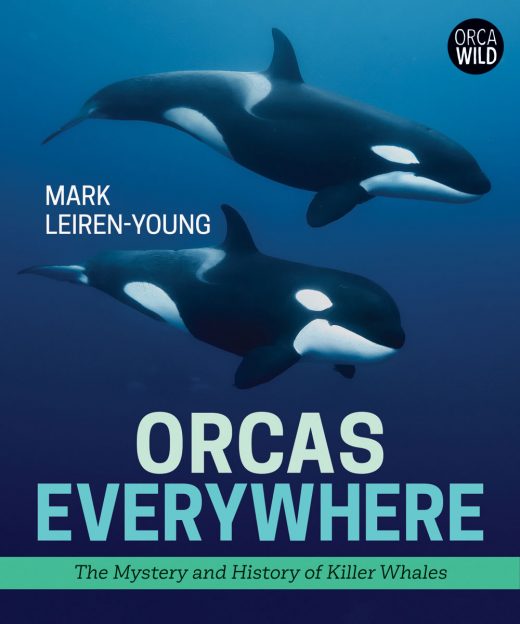 Orcas Everywhere: The Mystery and History of Killer Whales
Orcas Everywhere: The Mystery and History of Killer Whales
Text by Mark Leiren-Young
160 pp. Orca Book Publishers
If you know a young person who has experienced that magical moment of spotting a whale in the wild—and hasn’t stopped talking about it—Orcas Everywhere: The Mystery and History of Killer Whales is the book for them. With killer whale activist, writer, filmmaker, and comedian Mark Leiren-Young as their guide, kids will travel to the “orcaverse” and learn about the intelligent apex predators. Leiren-Young’s passion and knowledge make for an entertaining and enlightening narrative packed with historical and personal anecdotes. Photos from the past and present give young readers a front-row seat in the “splash zone,” and fun facts billed as “Orca Bites” offer many aha moments. Through 18 chapters sure to keep noses buried over the holidays, kids learn about the biology and behavior of killer whales, meet “celebrity orcas,” and get some tips on what they can do to help save the whales. Inspiring quotes from young activists conclude the book. As Robbie Bond says, “You are never too young to take action for the environment.”

